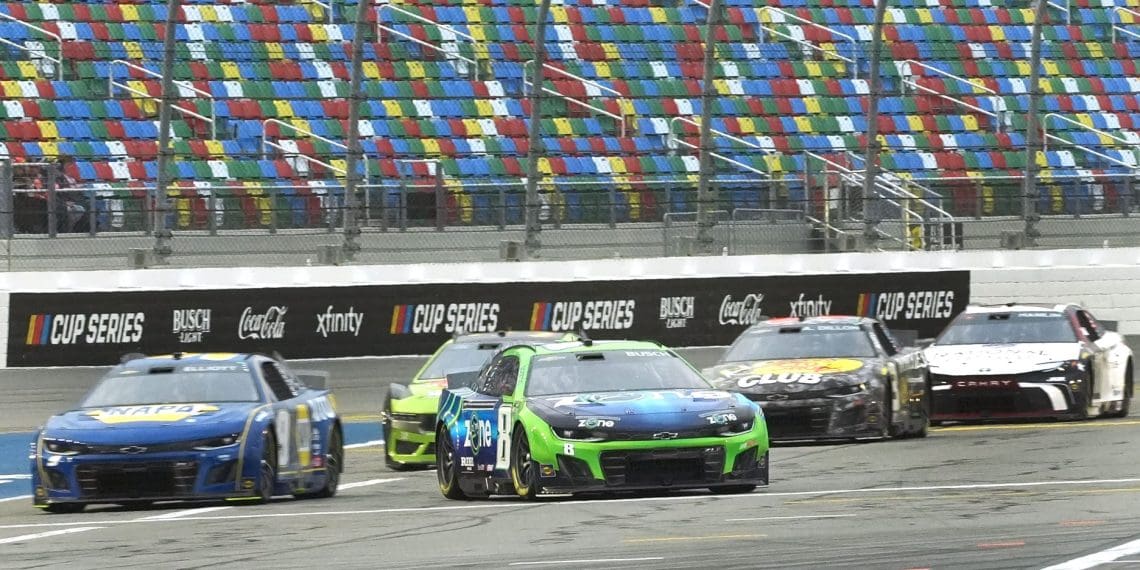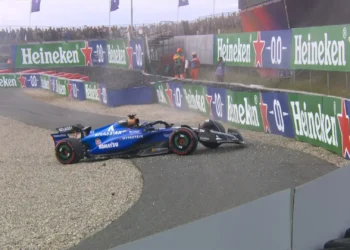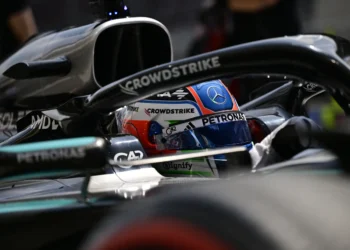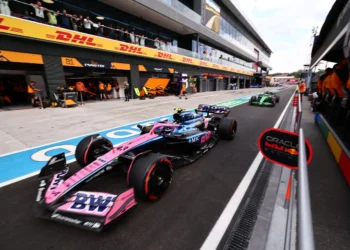Kyle Busch was left fuming after his hopes for the Daytona 500 came to an abrupt end with just 15 laps remaining in the race. The Richard Childress Racing driver was in the mix at the front when Joey Logano’s aggressive move triggered a multi-car wreck on lap 186, severely damaging Busch’s No. 8 Chevrolet. Despite the crash, Busch’s team believed the car could still race, only to be pulled from the event due to NASCAR’s updated Damaged Vehicle Policy (DVP).
Busch was quick to express his frustration, lashing out at NASCAR officials, claiming, “I don’t even think they know their own rules or procedure.” But, according to NASCAR veteran Kevin Harvick, Busch may have misunderstood the situation, and the decision to pull his car from the race might actually have been the right call.
The Crash That Changed Everything
With only a handful of laps remaining, Kyle Busch was in a strong position at the Daytona 500—a race he has long desired to win. However, as the wreck unfolded, Busch’s car sustained significant damage, particularly to its front end. Despite this, the team felt confident that the No. 8 Chevrolet could still be repaired and sent back onto the track.
Under the updated DVP, teams are allowed unlimited time to work on their car in the garage, but there’s a crucial stipulation: the car must meet minimum speed on the track before returning for repairs. This is where things got complicated for Busch’s team.
Harvick Explains the Misinterpretation
Harvick, a seasoned NASCAR veteran, stepped in to explain why the decision to pull Busch from the race wasn’t necessarily a mistake. “With the new DVP policy, there are some new rules regarding what happens when a car has flat tires or is involved in an accident,” Harvick explained. “Once they got back, there were some technicalities with the rule. They sent the car back out on the track, but then brought it back into the garage.”
The key issue, Harvick noted, was that NASCAR’s updated policy requires that once the car leaves the garage, it must meet the minimum speed within three consecutive green-flag laps to remain eligible to continue. If it fails to meet the speed or returns to the garage, it is then officially ruled out.
Harvick continued, “They never went to a green flag, but they did bring the car back in to work on it, which technically isn’t allowed.” While the No. 8 Chevrolet was assessed in the garage, the rules dictated that Busch’s car could not return to the track unless it met the speed requirement, which it didn’t.
NASCAR’s DVP: What It Means Going Forward
Under NASCAR’s updated DVP, if a car involved in an accident is unable to return to the track under its own power, it is towed to the garage. Once there, the team gets one chance to make repairs and send the car back out. However, as Harvick pointed out, “it’ll be interesting to see if that rule sticks or if the team misinterpreted it.” He suggested that this incident could spark further clarity in the rulebook moving forward.
Ultimately, Busch’s team worked to assess the car’s damage, finding that there were no major structural issues and that all four wheels were still aligned. But it was clear that the damage was enough to prevent Busch from meeting the speed requirements, leading to his eventual disqualification from the race.
A Heartbreaking End to Busch’s Daytona 500 Run
While it’s clear that the decision to pull Busch from the race was rooted in NASCAR’s strict DVP rules, it’s understandable why Kyle Busch was so upset. After 20 years of racing in the Daytona 500, the victory was within his reach, only for the decision to be made that his car could not continue. The emotional toll was evident in Busch’s response, as the dream of capturing the Daytona 500 trophy slipped through his fingers once again.
For now, Kevin Harvick‘s explanation provides some clarity on why the decision was made, but it remains to be seen if the DVP will continue to evolve in future seasons. One thing is for sure—this year’s Daytona 500 will go down as a reminder of just how fine the line can be between victory and heartbreak.











